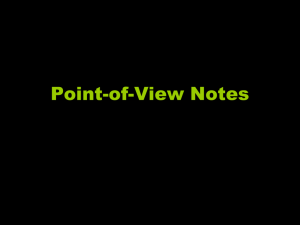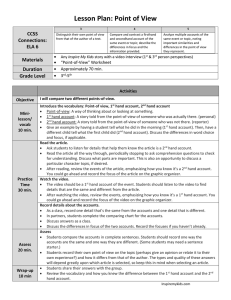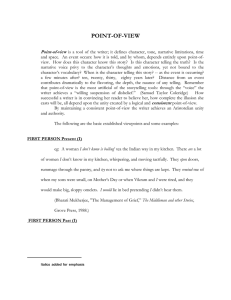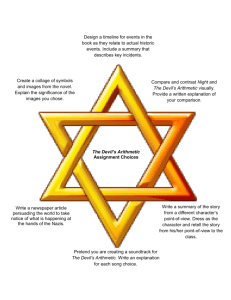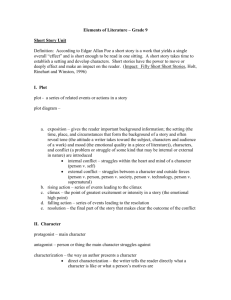3 Main Points-of-View
advertisement
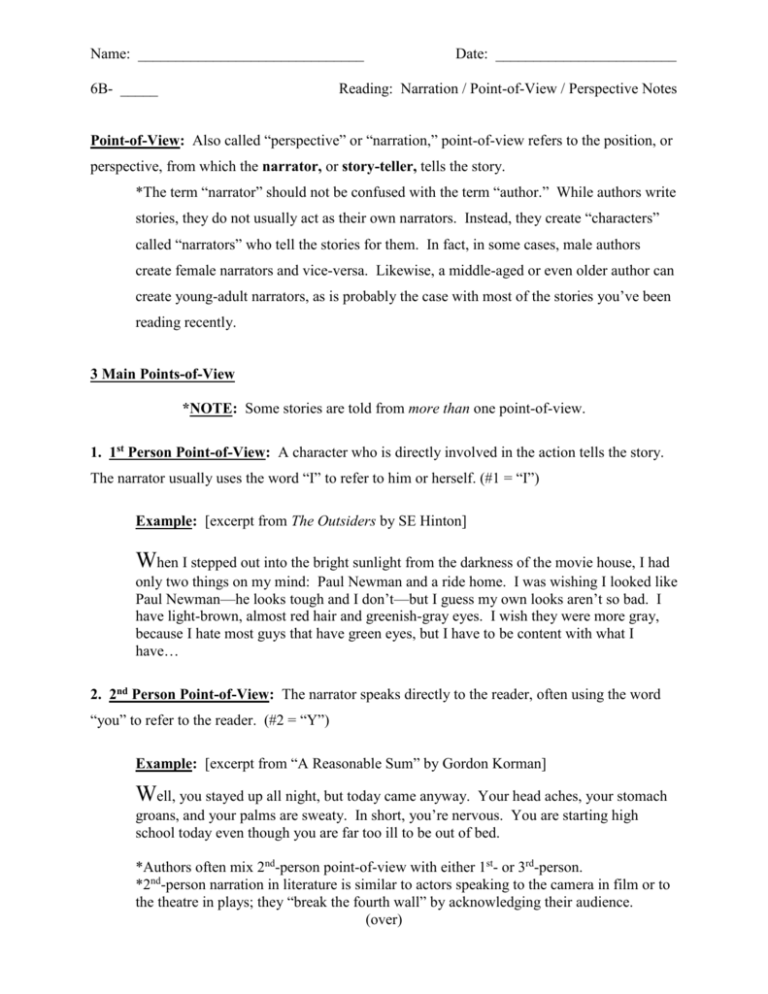
Name: ______________________________ 6B- _____ Date: ________________________ Reading: Narration / Point-of-View / Perspective Notes Point-of-View: Also called “perspective” or “narration,” point-of-view refers to the position, or perspective, from which the narrator, or story-teller, tells the story. *The term “narrator” should not be confused with the term “author.” While authors write stories, they do not usually act as their own narrators. Instead, they create “characters” called “narrators” who tell the stories for them. In fact, in some cases, male authors create female narrators and vice-versa. Likewise, a middle-aged or even older author can create young-adult narrators, as is probably the case with most of the stories you’ve been reading recently. 3 Main Points-of-View *NOTE: Some stories are told from more than one point-of-view. 1. 1st Person Point-of-View: A character who is directly involved in the action tells the story. The narrator usually uses the word “I” to refer to him or herself. (#1 = “I”) Example: [excerpt from The Outsiders by SE Hinton] When I stepped out into the bright sunlight from the darkness of the movie house, I had only two things on my mind: Paul Newman and a ride home. I was wishing I looked like Paul Newman—he looks tough and I don’t—but I guess my own looks aren’t so bad. I have light-brown, almost red hair and greenish-gray eyes. I wish they were more gray, because I hate most guys that have green eyes, but I have to be content with what I have… 2. 2nd Person Point-of-View: The narrator speaks directly to the reader, often using the word “you” to refer to the reader. (#2 = “Y”) Example: [excerpt from “A Reasonable Sum” by Gordon Korman] Well, you stayed up all night, but today came anyway. Your head aches, your stomach groans, and your palms are sweaty. In short, you’re nervous. You are starting high school today even though you are far too ill to be out of bed. *Authors often mix 2nd-person point-of-view with either 1st- or 3rd-person. *2nd-person narration in literature is similar to actors speaking to the camera in film or to the theatre in plays; they “break the fourth wall” by acknowledging their audience. (over) 3. 3rd Person Point-of-View: A character who is not directly involved in the action but who somehow knows what happened tells the story. The narrator generally uses characters’ names and “he” or “she” to refer to people in the plot. The narrator does not usually refer directly to himself or herself in the 3rd-person point-of-view. When a 3rd-person narrator uses “I,” it is probably in dialogue, when the characters— not the narrator—speak. (#3 = W) Example: [excerpt from The Golden Compass by Philip Pullman] …It was a sensation of such grace and power that Lyra, sharing it, felt like a young bird learning to fly. Farder Coram, watching from across the table, noted the places where the needle stopped, and watched the little girl holding her hair back from her face and biting her lower lip just a little, her eyes following the needle at first but then, when its path was settled, looking elsewhere on the dial. Not randomly, though. Farder Coram was a chess player, and he knew how chess players looked at a game in play. An expert player seemed to see lines of force and influence on the board, and looked along the important lines and ignored the weak ones; and Lyra’s eyes moved the same way, according to some similar magnetic field that she could see and he couldn’t.
